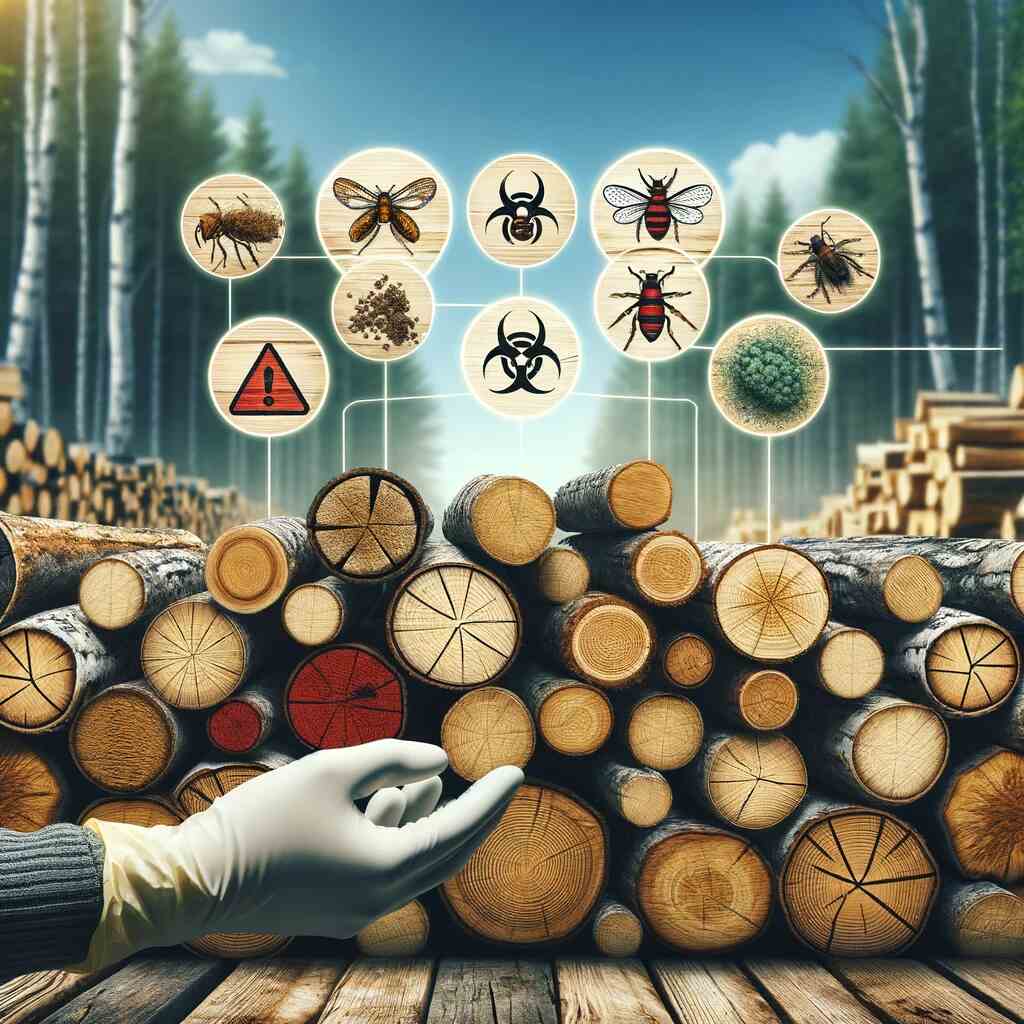When it comes to heating our homes during the colder months, many of us turn to the comforting warmth of a wood-burning stove or fireplace. Firewood has been a reliable source of heat for centuries, offering not only a sustainable and cost-effective solution but also a cozy ambiance. However, what many people may not be aware of is that not all firewood is created equal, and there can be health risks associated with handling or storing certain types of firewood.
In this article, we will explore these potential health risks and provide guidance on how to minimize them.
The Appeal of Firewood
Before delving into the health risks, it’s important to acknowledge why firewood is such a popular choice for heating. There are several compelling reasons:
- Cost-Effective: Firewood is often more cost-effective than other heating options like gas or electricity, especially if you have access to a readily available source.
- Renewable and Sustainable: When harvested responsibly, firewood is a renewable resource. Trees can be replanted to replace those that are cut down, making it an eco-friendly choice.
- Energy Efficiency: Modern wood-burning stoves and fireplaces are designed to be highly efficient, providing more heat with less wood.
- Ambiance: There’s a certain charm and coziness associated with a crackling fire that other heating methods can’t replicate.
However, it’s essential to be aware of the potential health risks associated with firewood to ensure that the benefits don’t come at a high cost to your well-being.
Types of Firewood and Their Health Risks
Not all firewood is the same, and different types of wood can have varying health risks associated with them. Let’s explore some common types of firewood and the potential health concerns they pose.
1. Softwood vs. Hardwood
Firewood can generally be categorized into two main types: softwood and hardwood. The main difference between the two lies in the type of tree they come from.
Softwood:
- Examples: Pine, spruce, fir, cedar.
- Health Risks: Softwoods tend to burn faster and at a lower temperature than hardwoods, which can lead to a quicker buildup of creosote in your chimney or stovepipe. Creosote is a flammable substance that can increase the risk of chimney fires if not properly cleaned.
Hardwood:
- Examples: Oak, maple, hickory, cherry.
- Health Risks: Hardwoods generally produce more heat and burn longer than softwoods. However, hardwoods can be more challenging to split and stack due to their density, potentially causing physical strain or injury during handling.
2. Treated Wood
Treated wood, often used in construction, is infused with chemicals to protect it from decay and insects. Burning treated wood can release harmful chemicals into the air, posing significant health risks.
Health Risks:
- Toxic Fumes: When burned, treated wood can emit toxic fumes, including arsenic and other hazardous chemicals. Inhalation of these fumes can lead to respiratory problems, eye irritation, and other health issues.
- Environmental Impact: Burning treated wood releases pollutants into the environment, contributing to air pollution and potentially harming local ecosystems.
It is crucial to never use treated wood as firewood and to ensure that any wood you use for heating is untreated and safe.
3. Mold and Fungi
Firewood, especially when stored outdoors, can become a breeding ground for mold and fungi. Moldy firewood can have adverse health effects when burned.
Health Risks:
- Respiratory Issues: Burning moldy wood can release mold spores into the air, which can be inhaled and cause or exacerbate respiratory problems, especially in individuals with allergies or asthma.
- Irritation: The smoke from moldy wood can irritate the eyes, throat, and lungs, leading to coughing and discomfort.
To minimize the risk of mold and fungi in your firewood, store it in a dry, well-ventilated area and keep it off the ground to prevent moisture absorption.
4. Insects and Pests
Firewood can harbor insects and pests that may carry diseases or cause allergic reactions when exposed to humans.
Health Risks:
- Allergies: Some people may be allergic to the insects found in firewood, resulting in skin irritation, respiratory issues, or other allergic reactions.
- Disease Transmission: In rare cases, insects and pests in firewood can transmit diseases to humans.
To mitigate these risks, inspect your firewood carefully before bringing it indoors and consider storing it off the ground on racks or pallets to reduce the likelihood of insect infestations.
Safe Handling and Storage Practices
To enjoy the benefits of firewood while minimizing health risks, follow these safe handling and storage practices:
1. Season and Dry Your Firewood
Properly seasoned firewood has lower moisture content, which makes it burn more efficiently and reduces the production of creosote. Season your firewood by allowing it to dry for at least six months to a year before use. Stack it in a well-ventilated area, such as a woodshed, to facilitate the drying process.
2. Avoid Treated Wood
Never burn treated wood, plywood, or any wood that has been painted or stained. These materials can release toxic chemicals when burned, posing significant health risks.
3. Store Firewood Off the Ground
Elevate your firewood off the ground by using racks or pallets. This prevents moisture absorption, reduces the risk of mold and fungi growth, and discourages insect infestations.
4. Inspect Firewood Before Use
Before bringing firewood indoors, inspect it for signs of mold, insects, or pests. Remove any questionable pieces to prevent health issues.
5. Properly Maintain Your Fireplace or Stove
Regularly clean and maintain your fireplace or wood-burning stove to reduce the buildup of creosote and ensure it operates efficiently. Have your chimney cleaned and inspected annually to prevent chimney fires.
6. Use Adequate Ventilation
When burning firewood, ensure proper ventilation in the room. This helps minimize the concentration of indoor air pollutants and ensures a continuous supply of fresh air.
7. Wear Protective Gear
When handling firewood, especially hardwoods that can be heavy and difficult to split, wear appropriate protective gear such as gloves and safety goggles to prevent injuries.
8. Consider Alternative Heating Sources
If you are particularly sensitive to smoke or have respiratory issues, consider alternative heating sources such as a high-efficiency gas or electric heater. These options can provide warmth without the associated risks of wood-burning.
Conclusion
Firewood is a popular and cost-effective heating source, but it’s essential to be aware of the potential health risks associated with handling or storing certain types of firewood. Softwood, treated wood, mold, fungi, and pests can all pose health concerns if not properly managed.
Remember that your health and well-being should always come first when using firewood for heating.









